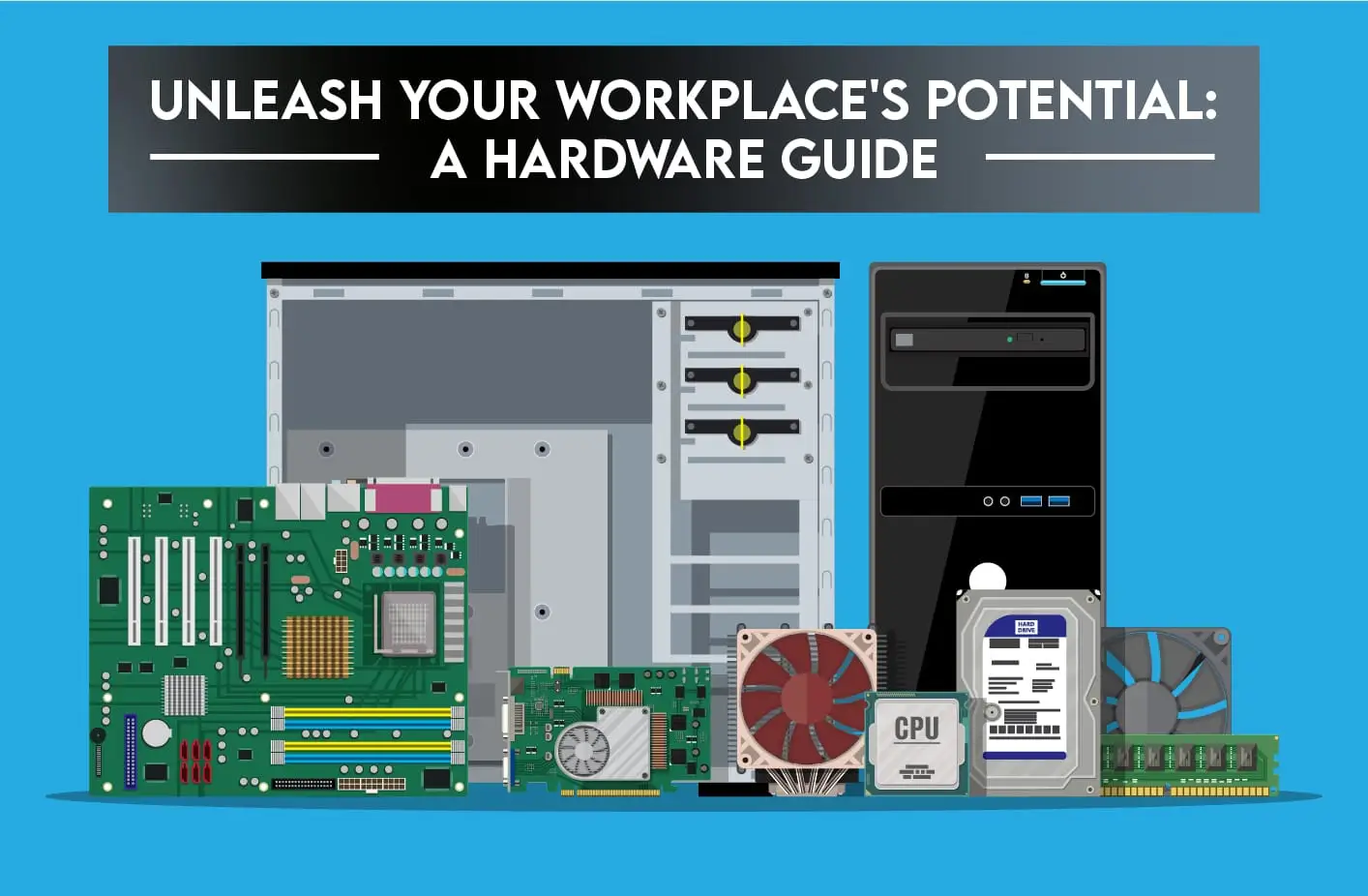Unleash Workplace Potential: A Hardware Guide

Unleash Workplace Potential: A Hardware Guide
Unleash Workplace’s Potential: A Hardware Guide In today’s workplace, the right hardware can be the difference between a productive powerhouse and a frustrating bottleneck. With countless options available, it can be overwhelming to choose the perfect components for your specific needs. Here we will break down: Unleash Your Workplace’s Potential A Hardware Guide, to helping you understand their roles and make informed decisions to optimise your workstation.
Understanding Your Needs for Workplace Potential
Before diving into the hardware catalogue, it’s crucial to assess your specific requirements. Consider these questions:
- What are your primary tasks? Are you a graphic designer crafting stunning visuals, a data analyst crunching numbers, or a writer crafting compelling stories?
- How resource-intensive are your applications? Do you frequently handle large files, run complex simulations, or edit high-resolution videos?
- Do you have specific software requirements? Certain programs may necessitate particular hardware configurations.
Once you have a clear understanding of your workflow, you can start tailoring your hardware selection accordingly.
The Building Blocks of Your Workstation
Now, let’s do a quick breakdown of the key components that make up a workstation:
The CPU
Think of the CPU as the brain of your computer. It handles all calculations and instructions. Key factors to consider:
- Core count and clock speed: More cores generally mean better multitasking, while higher clock speeds excel at single-core tasks.
- Intel vs. AMD: Both offer excellent options. Intel often leads in single-core performance, while AMD typically provides more cores for the price.
Memory
RAM, or Random Access Memory, is your computer’s short-term memory. It stores data that the CPU actively uses. Essential factors:
- Capacity: 8GB is sufficient for basic tasks, but 16GB is recommended for most users. For demanding applications like video editing or 3D rendering, consider 32GB or more.
- Speed: Higher MHz means faster data transfer. DDR5 is the latest standard, offering improved efficiency over DDR4.
Storage Solutions
Your storage drives house your operating system, applications, and files. Key options:
- HDD (Hard Disk Drive): Offers large storage capacity at a lower cost but is slower than SSDs.
- SSD (Solid State Drive): Provides faster boot times, application loading, and overall system responsiveness.
- NVMe SSDs: The crème de la crème of storage, offering blazing-fast speeds for demanding workloads.
The GPU
While the CPU handles general computations, the GPU excels at processing graphics.
- Integrated vs. dedicated GPUs: Integrated GPUs are sufficient for basic tasks, but dedicated GPUs are essential for graphics-intensive applications.
- NVIDIA vs. AMD: NVIDIA often leads in professional applications and advanced features, while AMD offers strong performance at competitive prices.

Motherboards and Form Factors
The motherboard connects all your components. Key considerations:
- Form factors: ATX is the standard, Micro-ATX is compact, and Mini-ITX is ultra-compact. Choose based on your case size and desired expandability.
- Compatibility: Ensure the motherboard supports your CPU, RAM, and other components.
The PSU
A reliable power supply unit (PSU) is crucial. Key factors:
- Wattage and efficiency: Calculate your system’s total power consumption and choose a PSU with adequate wattage and at least 80 PLUS Bronze efficiency.
- Modular vs. non-modular: Modular PSUs offer better cable management and airflow.
Cooling Solutions
Overheating can damage your components. Effective cooling is essential:
- Air cooling: Cost-effective and easy to install.
- Liquid cooling: Offers better performance, quieter operation, and is ideal for overclocking.
- Case fans and heatsinks: Optimise airflow within your case.
Peripherals
Your peripherals are the components that interact with your computer. Consider ergonomics, performance, and connectivity.
- Keyboards and mice: Choose options that suit your preferences and workflow.
- Monitors: Resolution (FHD – 1920×1080, QHD – 2560×1440 and 4K – 3840×2160), refresh rate, and size depend on your specific needs.
Empower Your Business with the Right Hardware
By carefully considering your workflow and understanding the role of each component, you can build a workstation that propels your business forward. Remember, ICTechnology is your trusted partner in finding the perfect hardware solutions. Our experts can guide you through the process and help you select the components that best align with your goals.
Are you ready to optimise your workpace? Contact ICTechnology today for expert advice and tailored hardware recommendations.





